Mesh screens for QinetiQ Q-Net armored vehicles (UK, USA)
The appearance of the Q-Net project was preceded by well-known events in Central Asia and the Middle East. During operations in Afghanistan and Iraq, troops from several countries encountered a number of typical problems. In particular, they lost their equipment due to enemy anti-tank grenade launchers and missile systems. According to the results of the first operations, the Pentagon decided to launch the development of additional hinged protection for equipment. Several US and foreign defense enterprises responded to the invitation from the military.
One of the claimants to the contract of the Ministry of Defense of the USA became the company QinetiQ. This organization, founded in 2001, works in the British city of Farnborough, but to work with the Pentagon and receive American orders, it had to establish a new branch. Thus, a division called QinetiQ North America is participating in the competitions of the American Army.
Work on a new version of additional protection for armored and special equipment began with the search for the most successful solutions, allowing us to obtain the desired ratio of characteristics. Quickly enough, the specialists of the firm "Kinetics" came to the conclusion that it was necessary to abandon rigid and heavy devices in favor of special protective nets. Proper selection of the network material, as well as the means of its installation could give the desired parameters.
It is worth noting that by the time the QinetiQ project was launched, some other organizations had, at a minimum, developed and tested their variants of mesh screens at the test site. In all cases, acceptable results were obtained, and some of these samples were even recommended for use. Thus, British and American engineers from QinetiQ could simply spy on other people's solutions and rethink them in their project.
QinetiQ has been developing its new project with the active participation of a number of related organizations. A definite contribution to the development of a new product was made by the DARPA agency and the Naval Research Administration of the US Navy. Their participation in the project, first of all, was to provide tests. Experienced networks were tested by shelling from military weapons in different conditions and in a certain range of distances.
The new project from "Kinetics" proposed the use of protection in the form of a tensioned network. The name of the company-developer and the main element of such protection were encrypted in the designation of the project - Q-Net. Later, according to the results of tests and the first years of operation of serial products, an upgraded version of the mesh screens was developed. It was designated as Q-Net II.
The overall QinetiQ Q-Net screen architecture is extremely simple. Its basis is a frame of metal pipes, having the desired shape and size. Along the perimeter of such a frame are numerous fastenings for the installation of the actual network. The frame with metal brackets is mounted on the body of the base machine. Like grid tensioners, the brackets are quite simple. They are metal devices with a support for mounting on the case and the removed stands for the frame. With their help, the screen is removed at a distance of several hundred millimeters from the body.
In accordance with the idea of the authors of the project, the screen in the form of a frame with a network can have any desired shape with transverse dimensions up to 1,5-2 m. This ensures that any existing equipment can be equipped with screens. The number, size and configuration of the screens are determined in accordance with the exterior of the protected machine and the wishes of the customer.
According to known data, the screen mesh is made of metal cables of small thickness. Cables are interwoven into a network with square cells. When making a network, cables are placed strictly vertically and horizontally, which gives it a characteristic appearance. To increase strength and improve combat performance, cables are supplemented with reinforcing striking elements. At all the intersections of the cables, small metal cylindrical washers are installed.
According to the developer, the QinetiQ Q-Net mesh screen has specific advantages over other mounted security systems. First of all, it has a lower weight. The grid with a frame is approximately twice as light as any other additional screen with comparable protection characteristics, regardless of its type. Low weight also simplifies operation. It is argued that the finished screen can be installed on any machine, and it does not require any special tools.
It was originally claimed that the Q-Net mesh screen is able to protect the machine from being hit by a rocket-propelled grenade or other anti-tank ammunition and maintain its operability. Such opportunities were confirmed during the tests, and then during a real clash with the enemy.
The principle of the screen from the "Kinetics" is simple; From this point of view, the Q-Net system is no different from a number of other analogues of American and foreign development. It is known that the best characteristics of armor penetrability cumulative charge shows at a certain distance from its target. The task of screens from the network is to prevent the flying ammunition from exploding or provoking its detonation at a greater distance.
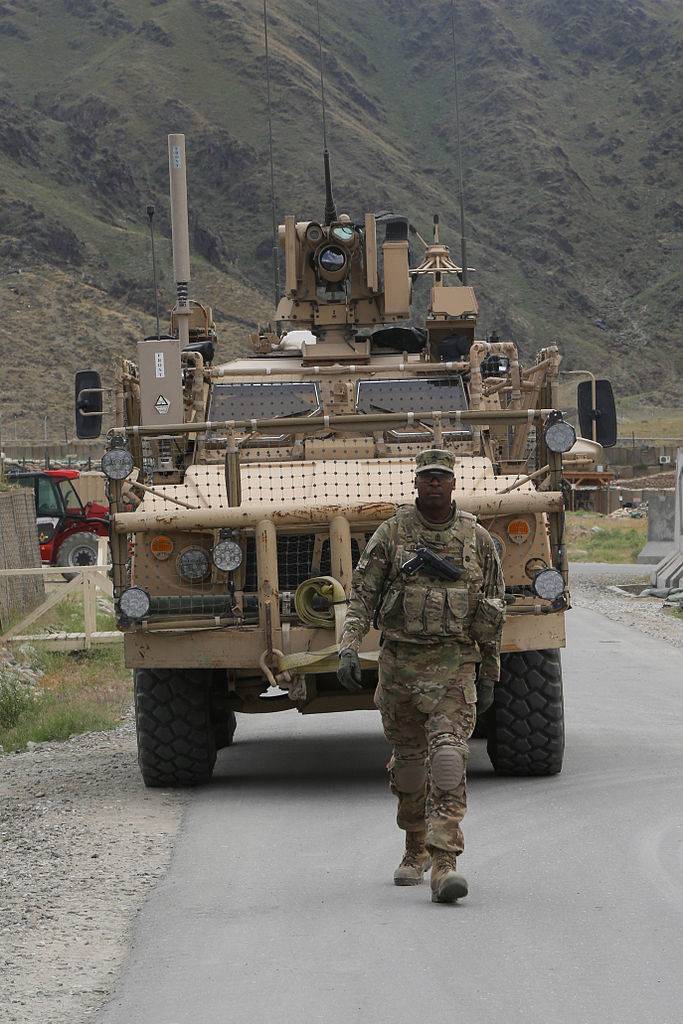
Armored car with Q-Net networks, operated by the US 101 Airborne Division. Afghanistan, Prov. Kunar, 5 May 2013
Depending on some aspects of a grenade hitting the Q-Net network, two main scenarios are possible. With a strong enough impact on the network, for example, if it hits the metal element at the intersection of the cables, the screen can provoke a detonation of the ammunition. The explosion of a shaped charge occurs at an increased distance from the body of the machine, and therefore the negative impact on it is sharply reduced. In other conditions, hitting the ropes or “damaging elements” of the grenade net may collapse and lose its functionality.
The main work on the QinetiQ Q-Net project was completed at the end of the last decade, and soon the first contract for the supply of such protective equipment appeared. The Pentagon has ordered several hundred sets of promising screens for various types of equipment. Screens of various sizes and shapes were suggested to be mounted on armored vehicles preparing to be shipped to Afghanistan and Iraq. They were planned to be used with M-ATV and RG-31 armored vehicles, Stryker armored personnel carriers and other equipment that does not have its own protection against anti-tank ammunition.
In 2010, armored vehicles with Q-Net screens hit the hot spot for the first time. First, the soldiers who had to operate the machines with nets, treated the latter not without suspicion. They believed that the new option of defense could not withstand the attack of the enemy, and this would lead to the most dire consequences. However, soon the new screens were able to show their capabilities in a real battlefield, and the soldiers had to reconsider their views.
19 September 2010 of the year 3 Battalion of the 187 Regiment of the 101 US Airborne Division, who served in the Afghan province of Ghazni, were ambushed. The enemy fired small arms from a distance of less than 100 m, but the armored cars were protected by American soldiers from bullets. The terrorists attempted to attack the armored cars with anti-tank rocket launchers. Three grenades consistently hit the screen of one of the armored cars. The explosions seriously damaged the metal net, but the cumulative jets could not penetrate the relatively thin armor. From the complete destruction of the technique saved only mounted screens.
This incident changed the attitude of the soldiers to the new means of protection, and could also have an impact on the plans of the military department. After examining the 19 battle of September, the Pentagon decided to launch a full-scale mass production of QinetiQ Q-Net networks and begin their mass purchases. Already in February 2011, a new order appeared, providing for the purchase and supply of 7500 kits for different equipment. Each month, QinetiQ North America was supposed to supply thousands of sets. The possibility of ordering several additional batches of such products for a particular technique was not excluded.
In May, 2012, Q-Net kits became the subject of another contract. The US Army has ordered over 800 kits to equip one of the latest armored vehicles. Over the next few years, a number of orders appeared, with the help of which the Pentagon wanted to protect existing machines of various types. In all cases, it was a question of at least hundreds of sets, each of which included several separate screens of required sizes and shapes.
Taking into account the experience of testing and operation of Q-Net mesh screens of the first version, the company "Kinetics" created their updated version. The Q-Net II project provided for a slight reworking of the existing structure using a different cable, improved frames and means of grid suspension, reinforced washers, etc. While maintaining all the basic technical and operational characteristics, the network of the second modification had some advantages over the basic design. A substantial increase in strength was obtained, which simplified the defeat of anti-tank ammunition, and also managed to slightly reduce the weight of the assembly.
Serial production of Q-Net II networks started in the fall of 2012 year and, according to known data, continues to this day. Such equipment is received by all new and new combat vehicles of various types. In the promotional materials of the company-developer, released last year, it was stated that, to date, two types of Q-Net networks have been installed on more than 13 thousand carriers.
The starting and main customer of QinetiQ mesh screens was expectedly the United States Army. She for a few years put the vast majority of serial products. At the beginning of this decade, orders were received from the armed forces of France and Poland. It can be assumed that they took the decision to purchase the screens after the memorable 19 battle of September 2010 of the year. The characteristic architecture, which provides maximum flexibility of application, has allowed new customers to equip their equipment with imported screens without any difficulty.
From the point of view of the basic concept, the QinetiQ Q-Net mesh screen is not something remarkable and hardly differs from a number of similar developments. Nevertheless, he managed to become the most commercially successful product of his class and beat the competition by a large margin. It is easy to see that such success, among other things, is based on certain technical advantages, as well as a very successful “advertisement” in the form of events on the battlefield.
Currently, the international armament market offers a whole range of mesh screens of one kind or another. All such products have similar capabilities and the same advantages over other mounted systems. They are easier and more convenient than any lattice screen, they are simply mounted and, in general, solve tasks.
However, we can assume that the product Q-Net has some advantages over its competitors. First of all, it is the increased strength of the network, provided by the use of metal cables. Probably, such a network, slightly losing in terms of weight, differs from modern synthetic structures in greater strength and rigidity. As a result, the main combat indicators also increase.
Soon after hitting the network’s hot spot from Kinetics, they were tested by combat. The screens of one of the cars were hit three times with anti-tank grenades, received the most serious damage and partially collapsed, but did not allow them to penetrate the armor. Obviously, such “tests” in the conditions of a real battle were considered clear proof of the screen's potential and taken into account when choosing additional protection for serial production and procurement.
Technical features, competitive advantages and possibly some administrative factors have led to quite remarkable results. Mesh screens QinetiQ Q-Net adopted by several armies and installed on the equipment of many types. More than 13 thousand sets of such protection have already been released and production continues. Probably, the number of carriers of protective nets will continue to grow.
On the materials of the sites:
https://qinetiq-na.com/
https://defenseindustrydaily.com/
https://army-technology.com/
http://clarksvilleonline.com/
- Ryabov Kirill
- US Army / defense.gov, dvidshub.net, defenseindustrydaily.com
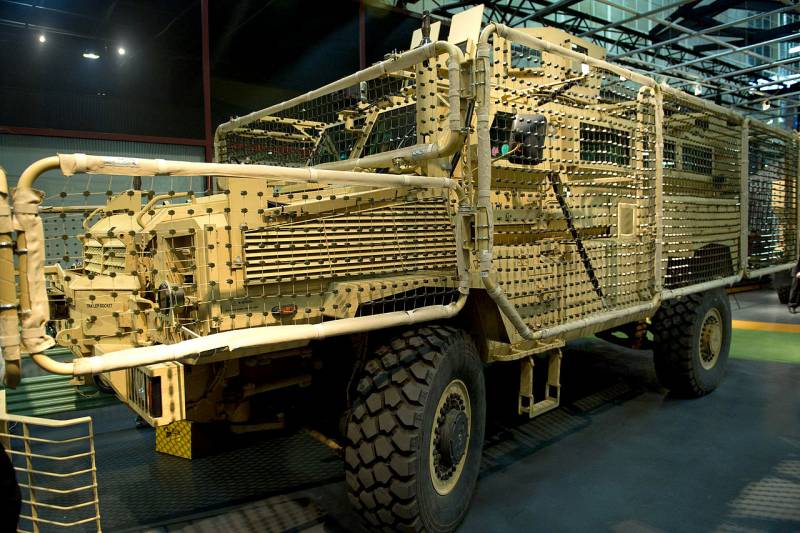
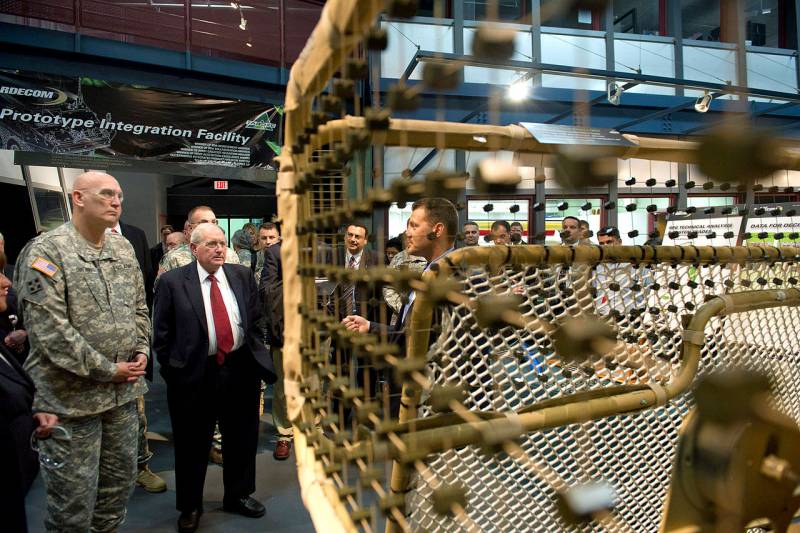
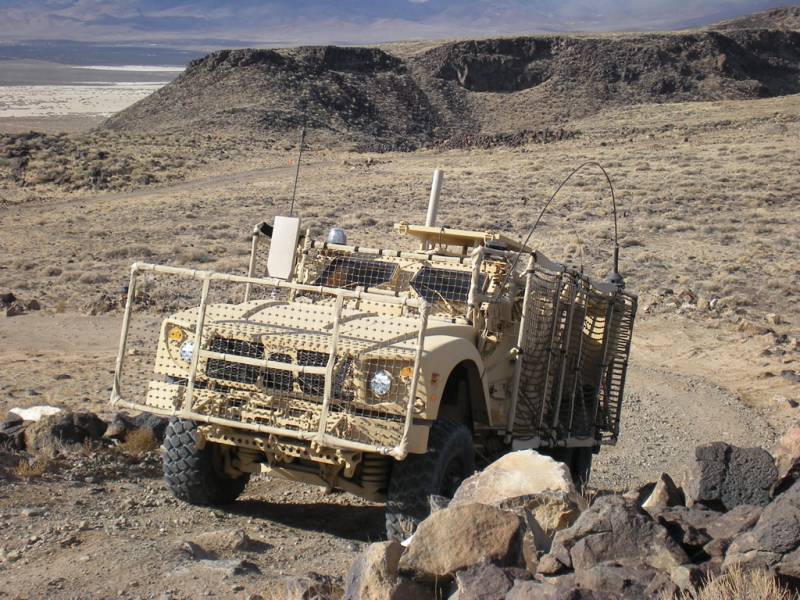
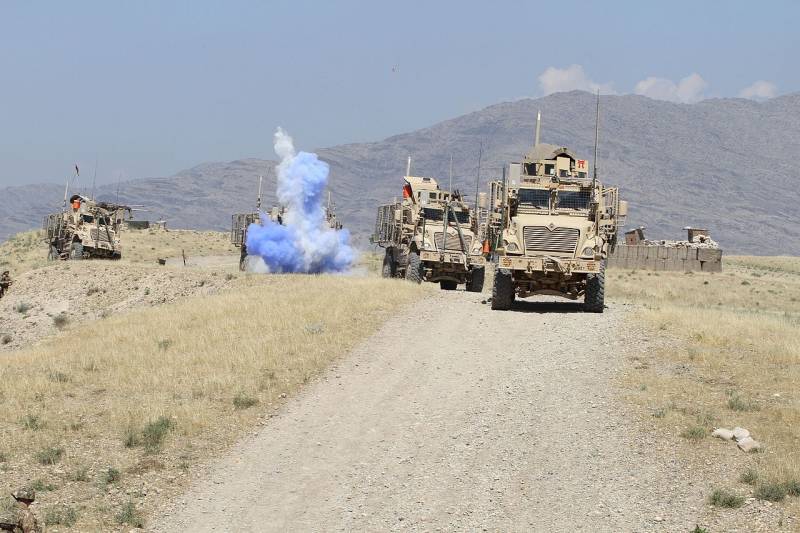
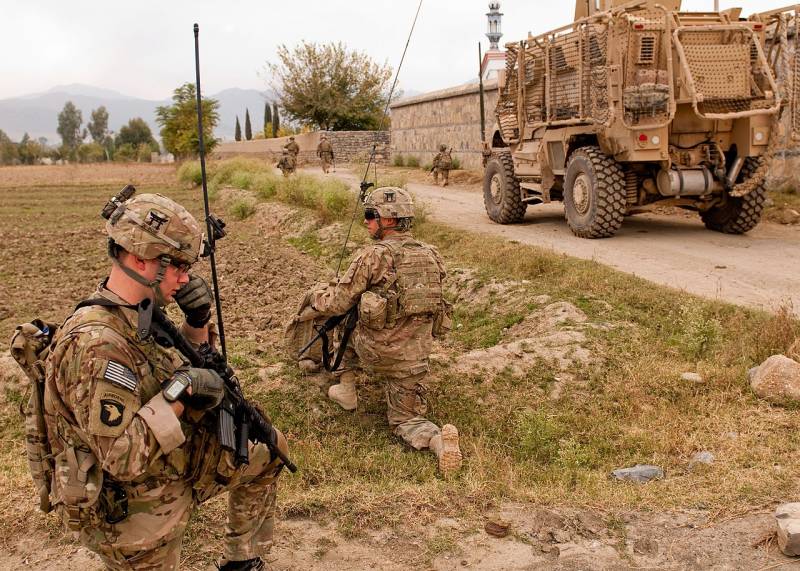
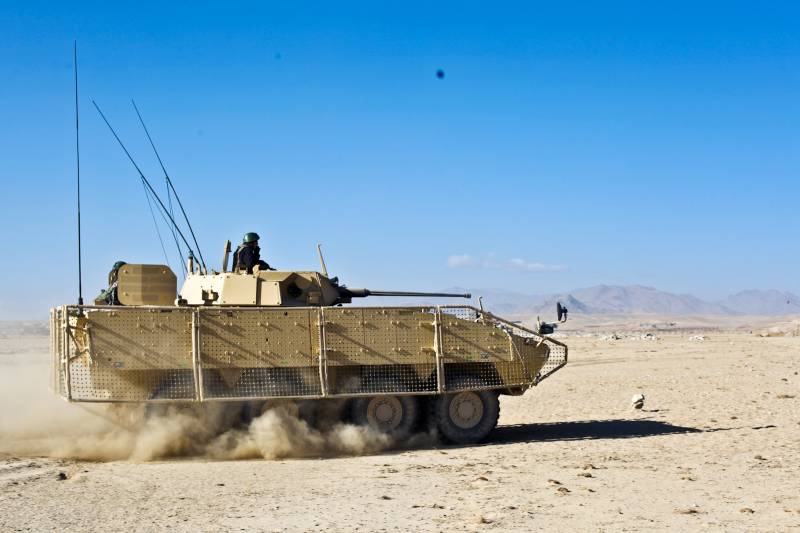
Information